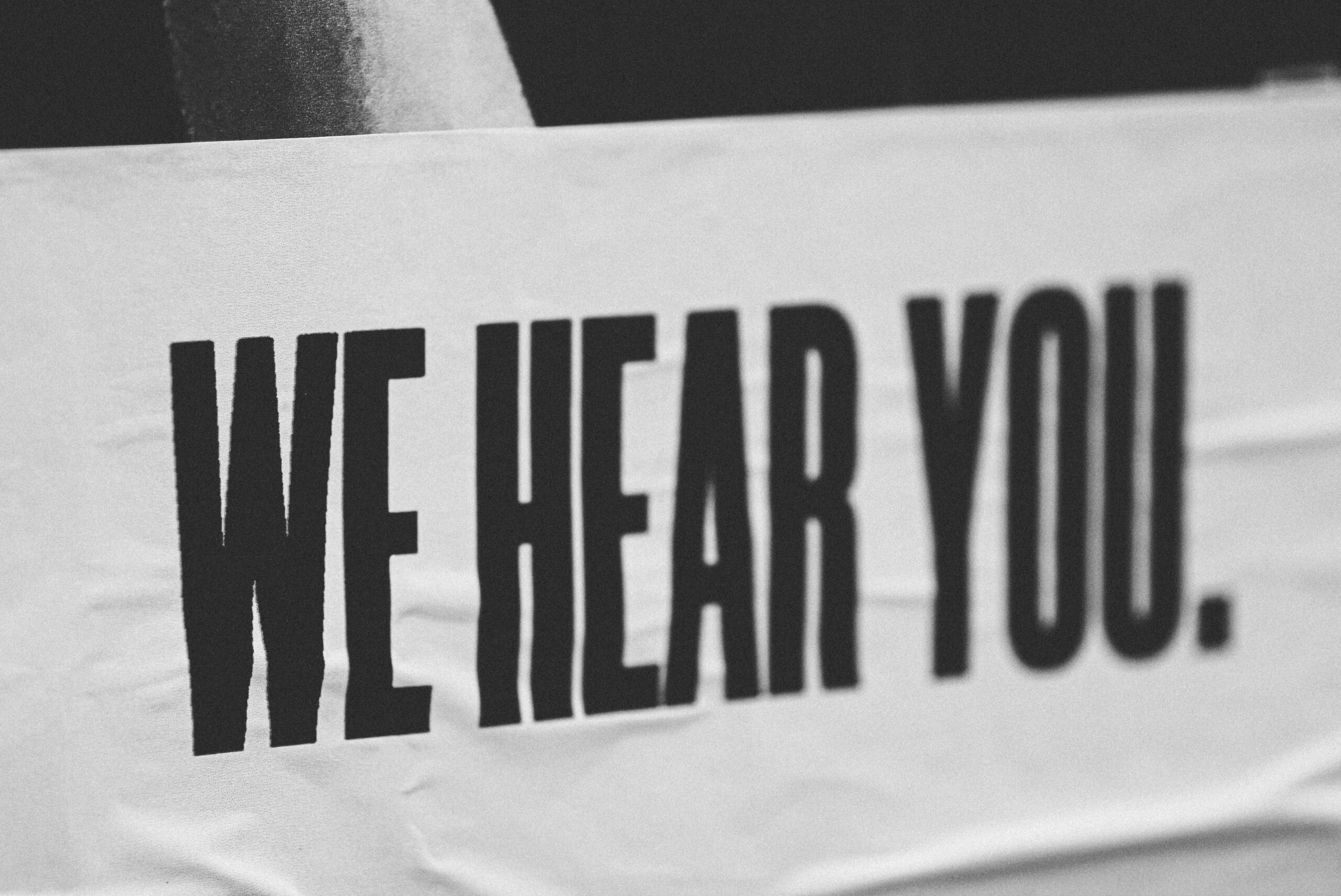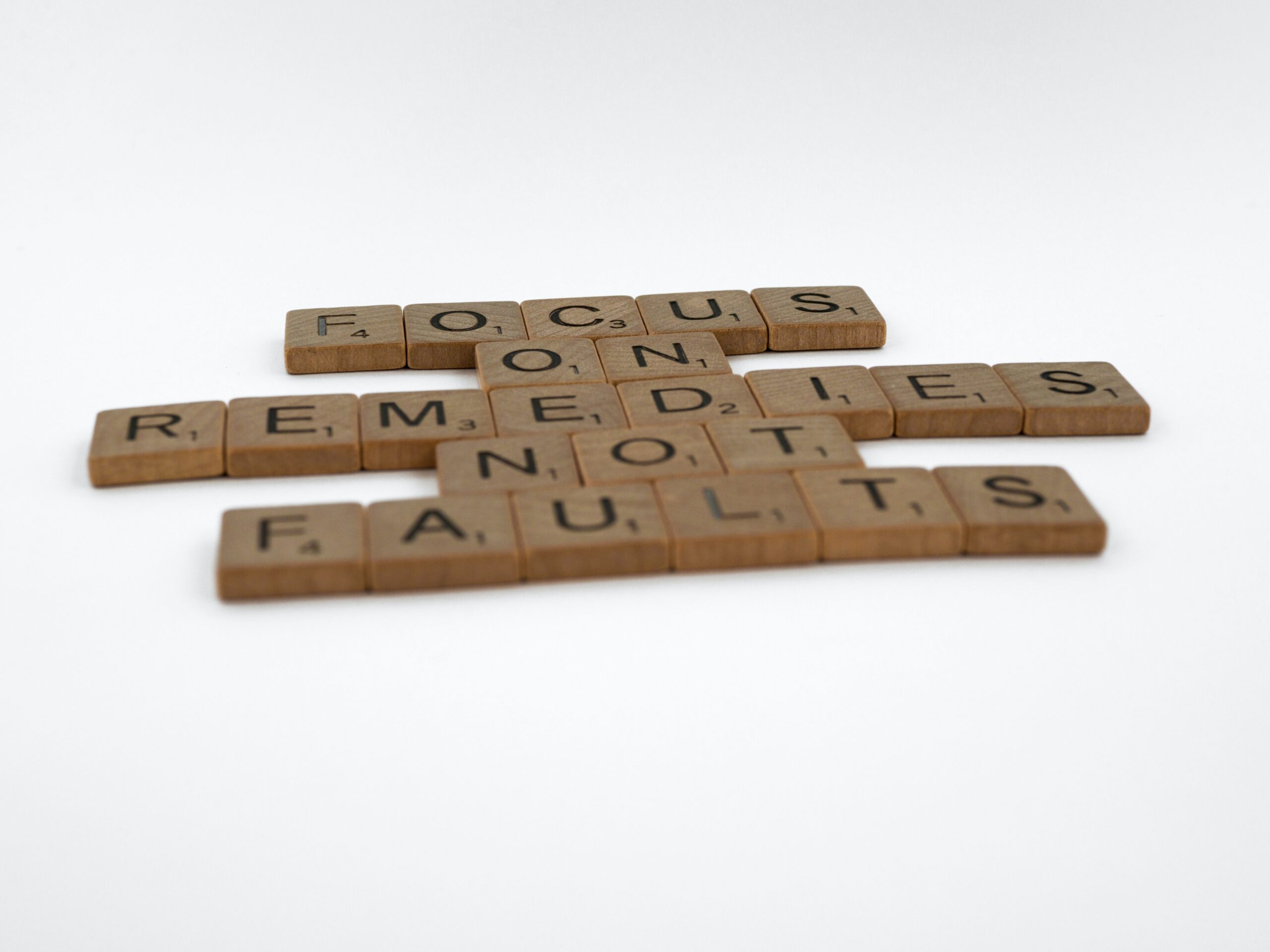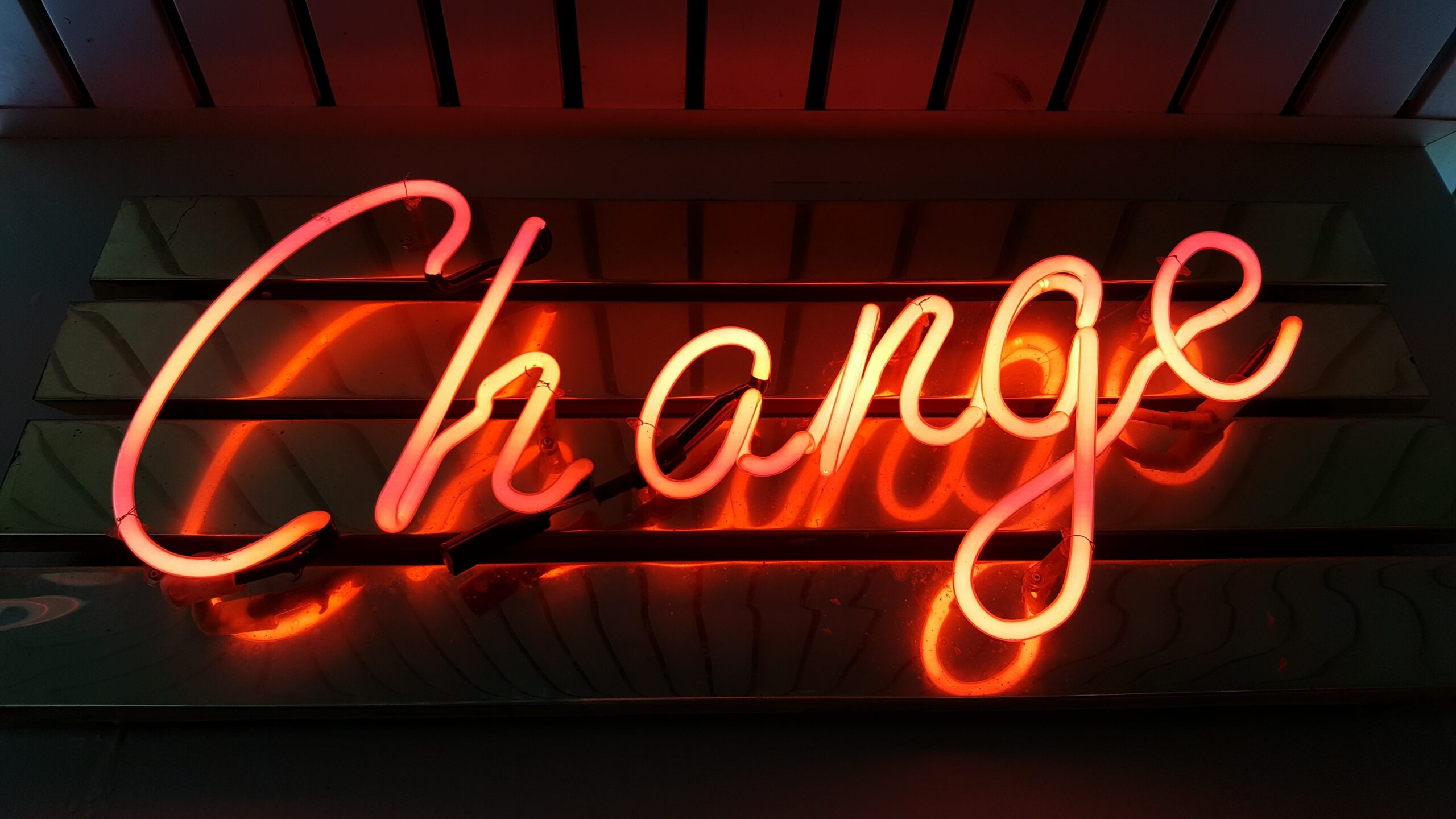
Communication, Leadership
The doing versus the being of listening. There are no shortcuts if you really want to connect with people.
“My boss says all the time now, ‘I hear you,’ when I’m telling them something. But the problem is, do they really? It feels like they’ve been on a leadership course, and this is something that they’re trained to say. Is this the case? Is that what you’re teaching people these days?” I don’t blame her for being upset. When I hear things like this, I want to bang my head against a wall. It’s a perfect example of hearing something in a leadership class, and then applying it on autopilot as a box tick exercise. People aren’t stupid, and they can always smell when someone isn’t being authentic and is just going through the motions. I’ll just say the things they tell me to say. And that will get the result I want. Wrong. Leadership skills aren’t meant to be a crash course in manipulation. And even though I often say leadership is more about who you are being than what you are doing, there are still so many folks who show up to a course looking for a quick tip or trick that will miraculously transform a relationship without putting in the hard work. The doing versus the being of listening Let me explain what I mean by doing and being. Doing – is about developing leadership skills and practising them until they form new habits. It takes persistence, practice, and hard work. These could be skills pertaining to having feedback conversations, listening skills, performance conversations, delegating tasks, coaching, giving presentations, time management. These are some of the skills related to successful leadership and we must practice them, as the more we practice the more leadership competency we build. Practice makes better. Being – is a journey of leadership self-exploration. When we are more self-aware and accessing our Learner Mindset we can manage our well-being, build stronger relationships, innovate, and deliver higher performance levels. Being is about how you are showing up. Are you just going through the motions, or do you really care about your employees, the team, and the work product? If you value things like integrity, is that visible to others in our behaviour? Would others describe you as a person with a high degree of integrity? The question I often ask leaders to explore this aspect of beingness is “Why on earth would anyone follow you?” It’s meant to be provocative, because there is often a disconnect between how we want to be perceived and how our beingness is landing with others. So back to my participant’s question. One of the skills that I often illustrate is acknowledging and validating what you’re hearing another person say. That goes way beyond parroting a phrase like, “I hear you.” Here’s what I said to that participant: “It sounds to me that you’re frustrated. And it makes perfect sense that you would be because I’m hearing that authenticity is important to you. You wonder whether your boss is paying attention, or just parroting something they’ve been told […]
September 14, 2023
|
4.1 min read

Leadership
How to Set Boundaries at Work part 2 – The Art of Letting Others Sit in Their S#it
When I think about my own journey, whether it pertains to life or leadership, boundaries are one of the things I’ve probably struggled with the most. Boundaries with friends, boundaries with family, boundaries with colleagues. The problem with human relationships is that they often trigger reactivity in ourselves, especially if we let our buttons get pushed. And when our buttons get pushed we often lose control of our boundaries. And we all have buttons. The more aware of what they are, the better off we can be at managing them and our boundaries. There’s a lot of talk at the moment in popular culture about setting boundaries. Telling people what’s up, how they need to show up with you, be with you, work with you. There’s a lot of emphasis on having feedback conversations to clarify firm lines and if someone God forbid crosses the line, we’re encouraged to label this person as toxic and eject them from our lives. That is one strategy. And in certain situations, it could be the appropriate one. But in my experience if you follow the above a bit too rigorously, you’re going to end up a very lonely person who has managed to alienate just about every single person from your life. Setting boundaries doesn’t have to look so black and white. I’ll give you an example of something that happened to me this week. Silence Can Be a Boundary’s Best Friend A colleague asked for 45 minutes of my time to prepare for an upcoming delivery that we’re co-facilitating together. I don’t know this individual very well and had never worked with her before. I show up to the call on time, as I always do, given that being on time is something I value and something my clients know me for. I login to the zoom and am let into the room, where I hear my colleague speaking on another call and hear other voices as well as hers. She pops a message into the chat – “on another call, be with you in a bit.” Now, at this point I’m livid. She didn’t even think to mute the call she’s already on, so I can hear what’s being discussed. And she’s expecting me to just sit there and wait. Rude and disrespectful are two descriptors that instantly popped into my head. I thought about what I wanted to do. I decided to exit out of the zoom call. I waited a few minutes, sent a few emails, and then popped back in. She finished up quickly after I returned into the room and our call commenced about 8 minutes late. “Apologies Shelley – but it was a call with a potential new client to facilitate something. You’re freelance too, I’m sure you know how it goes.” Cue the awkward silence. I sat there and looked at her on the screen, and then I changed the subject. I didn’t agree with her, I didn’t disagree with her. And it shook her […]
September 7, 2023
|
4.7 min read

Authenticity, Leadership, Mindfulness, Well Being
A tip for releasing negative self talk
As human beings we are masters at creating narratives. We create colorful stories that have the capacity to stir up emotion. And that can be very wonderful and inspiring. I’ve often said that emotions are the elixir of life. The problem with our innate gift for story telling is that we often tend to cling to the negative and painful narratives and replay them repeatedly in our minds. If she just hadn’t said that. If I just hadn’t done that. Then the relationship wouldn’t have been ruined. I wouldn’t be in such dire straits. We create headlines of negativity And off this rumination we create high level headlines, scripts that sound like: I am always getting taken advantage of. I am estranged from this relative. I am always making bad choices. I am bad at leadership. I am horrible at relationships. I am not assertive enough. I am weak. I am not hardworking enough to pull that off. I am overweight. I am stupid. I am never going to get ahead in life. I am damaged. I am a victim. I am powerless to change anything. Just let it go, right? We’re often told by self help experts that we have to let go of these negative scripts. Release the negative self talk, they exclaim! But how? Especially when they’re so ingrained. Many of these stories have been kicking around in our brains for decades. Maybe I’m crazy for saying this but “Let that sh%t go” sounds trite and condescending. If it was that easy, I would have done it by now, is what I often think when I’m met with platitudes like that. I often speak about the power of language with folks I am coaching, and direct coaching clients to pay particular attention to anything that comes after the phrase “I am.” Why? Because words are literally magic. And they have the capacity to expand the possibilities in our lives or close them down for good. Words, whether spoken out loud or spoken in our head, are incredibly powerful. If you’ve ever read or heard of the book, The Four Agreements, Ruiz speaks to this when he addresses the first agreement – Be impeccable with your word, who says: “You can measure the impeccability of your word by your level of self-love. How much you love yourself and how you feel about yourself are directly proportionate to the quality and integrity of your word.” Beware of the negativity bait and switch So what would impeccability of word look like as it pertains to releasing negative self-talk? Would it be the converse? Instead of I am not weak, perhaps the answer lies in the reverse – I am powerful. That would be convenient, wouldn’t it? Just a simple bait and switch should be enough to do the trick, right? In my experience it’s tough to go from one extreme to the other. We as humans also have an animalistic ability to sniff out the falseness of a message. If […]
August 23, 2023
|
4.8 min read

Leadership, Motivation, Productivity
When work feels like a daily grind, think about this…
The last few weeks have not been the easiest. I’ve got a condition in my inner ear, that when it flares up, I have an on again off again low-grade fever and get dizzy, where every day I’m on a boat that is rocking in the wind as I try to do my best to coach, facilitate, or do whatever it is I’m tasked with. Not fun. And then things pile up, I get stressed, I try to exercise self-care and ask for what I need, reschedule where I can, show myself some much-needed compassion and empathy. But as you know, these things aren’t easy, especially when you run a business. All this to say that some things fell off in the shuffle last week, which included this blog. And at that time, I practiced compassion and told myself it was okay, that in every life a little rain must fall, and took the opportunity to congratulate myself on my fine efforts up to this point. Which is all well and good. Yay me. And this week I’m still muddling through as the dizziness isn’t gone yet and heard a pesky little voice ringing in my ear, the voice of the workhorse, full of type A authority – “Pull your head out of your rear Shelley, and just get the blog done!” And guess what happened? Absolutely nothing. I started looking for ways to procrastinate. My mind was filled with anything else I could do, and I really do mean anything else. Taking out the trash, scrubbing the toilets, making a grocery list. I was really scraping the bottom of the barrel to be sure. Why? Because it felt like a grind. A soul destroying, sucking daily grind. And who can easily muster energy for the daily grind? We unknowingly create our own daily grind And then I remembered the fundamental lesson on why it’s important to approach life more focused on the journey than it is the destination. Or in other words, the being is just as (or even more important) in life than the doing. So often in life and leadership we’re focused on the latter. I’ve just got to get this deliverable out the door. Make another phone call, send another email. Complete another performance review. Give another presentation. And then I can relax. I’ll have more time later to think about things and enjoy things. But the problem is we never do. This is how we fool ourselves. And then we wonder why we feel so empty, and life just feels like an endless daily grind of one thing after another. I’m not saying reframing this is easy by the way, we live in a world that rewards output and productivity. We set ambitious targets for revenue, we set stretch goals, we live in a VUCA – volatile, uncertain, complex, and ambiguous world where everything needed to be done yesterday. And I’m also not saying that we shouldn’t get goals or visualize success. As a coach […]
August 17, 2023
|
5.2 min read

Change, Leadership
Wondering how to get buy in for change?
I’m always leery of people who say they love change. I wonder what they’re hiding behind their rosy façade. We may learn to adapt to it, we may learn to recognize there is a huge advantage in staying agile and nimble, but at our core, we often downright fear it. We resist it in overt (and sometimes very covert) subtle ways. A new organizational change is announced, and I think silently to myself, “Yeah right, they’ve tried this before. It won’t last.” And then I passive aggressively go about my business of doing exactly what I was doing before. Or perhaps I resist more vocally rather than passively. But the bottom line is we typically do resist. When I teach a course on Leading Change, managers often complain about resistance and the challenge of getting buy in when it comes to change. And a challenge it is indeed. The trick in navigating it isn’t to push hard and fast to timetables and tactical schedules. You’ll just get more resistance. The trick is to take a step back and think about where the resistance is coming from. And then take a more considered action. When people resist change, it’s typically because one of our core needs have been threatened. Core needs come in a few different categories. Let’s take a look at them. Core Needs typically triggered by Change Initiatives Security – our most basic need. The need to feel safe, that our livelihoods are protected, that we know where our next paycheck is coming from. Think about the impact of the following actions on a person’s sense of security: Inclusion and Connection – another very basic need. Humans crave a feeling of belonging, whether it’s a work or at home. Power – or status, is an important driver for many people. Change often accompanies a change in power or status for affected staff. Have you ever experienced the following: Order and Control – there may be a few lucky folks who thrive in chaos, but many don’t. Unclear expectations are the number one source of conflict in teams and change often precipitates these conditions. Competence – accountability without competency is a recipe for disaster and often sets up an environment of blame and shame. Fairness and Justice – a lack of perceived fairness is one of the quickest ways to erode trust. Maybe you recognize previous actions you or others have taken as you look at the above list. Chances are those actions were unintentional, and you had no desire to put others in a place of distress. But when you’re getting resistance it’s important to think beyond compliance and think about the why. The more you’re plugged into the core needs of those affected by the change, the better off you’ll be at navigating concerns. Coaching questions for thought: Shelley Pernot is a career and leadership coach who is passionate about helping her clients discover their talents and step into their greatness. Reach out to me here for a […]
August 3, 2023
|
4.6 min read

Emotional Intelligence, Mindfulness, Well Being
Lean into the restlessness, rather than run
Today’s blog is hitting on a topic near and dear to my heart. It reminds me of the proverbial phrase, “Idle hands are the devil’s workshop.” If you grew up in the South like I did, you’ve probably heard a version of this in your formative years. And if you didn’t – welcome to my world, filled with many such sayings like this one and “There are a million ways to skin a dead armadillo.” (the latter of which we won’t be focusing on today just in case you were wondering…) Idle hands aren’t the problem But we do live in this way – idle hands are to be avoided at all costs. I’ve often wondered why. Maybe, deep down, we’re afraid of calm. Fearful of it even. Silence can be terrifying if we’re not used to it. When I first started practicing mindfulness and meditation, I heard horrible stories about adverse reactions folks were having upon trying a few minutes of meditation. It scared me as a facilitator. Panic attacks. Participants reporting they felt their skin was crawling. And when I’ve felt forced to sit for a long time at a meditation retreat, I’ve often experienced similar sensations. Feelings like boredom can be unbearable, especially if we always have the constant companion of the smartphone and scrolling to keep us company. That’s the annoying problem with mindfulness practices like meditation. They’re difficult only because we must sit with ourselves. We are finally alone with ourselves. And when you’re alone and have nothing to distract you, you have no choice but to feel what you’re feeling. Human beings are masters at avoiding feeling the difficult things. We become workaholics, alcoholics, shopoholics, foodoholics instead. I’ve even seen working out become an obsession. I have a friend who manages this dance better than anything I’ve ever seen. She runs a successful business, she’s always on the go. She stays in perpetual motion. We have a party and she’s on her phone responding to a text, in-between bouncing around from guest to guest engaging them in banter, then running to the kitchen to straighten things, helping with the dishes (which I greatly appreciate by the way!). I don’t think I’ve ever seen her sit still. There’s a look in her eyes that I’ve picked up on, she’s scanning the room looking for the next thing she can do, straighten, clean, or put away. I get this compulsion all too well because quite often I’ve been this person. If you look hard enough in those moments, you’ll notice what’s sitting underneath the surface is a restlessness. An emptiness. The restlessness is a clue – We’re really running on empty I’ve been feeling quite a bit of this myself lately, so I know. The difference is I’ve finally learned it’s not a sign that I need to speed up. That’s how I used to handle it. I would find ways to occupy myself, anything I could do to keep that empty, restless, grasping, sticky feeling […]
July 27, 2023
|
4.9 min read
Ask Ms. Mindfulness
Shelley Pernot, otherwise known as the Irreverent Guru of Mindfulness, muses on life, leadership and everything in between. Your one stop shop for career tips, leadership tips and daily inspiration!

It was a privilege to work with Shelley as my leadership coach! The process was structured and yet flexible enough to meet needs as they arose. Shelley helped me to grow, learn more about myself, and to really achieve what I set out to accomplish. We worked on planning, navigating a promotion successfully, and so much more! I experienced many successes as a result of working with Shelley, she has great resources, knowledge, and really helps with setting the foundation to this coaching work. She won’t let you down!
Stacy Campos
Regional Coordinator
Having the opportunity to have Shelley as my Leadership Coach could not have come at a better time in my career. I was recently promoted to CFO and was new to the Senior Management Team. Shelley helped me navigate joining the team as well as helped me to determine who I wanted to be as a leader. The Leadership Circle Profile helped our team to discover our blinds spots and to be able to understand each other better. Working with Shelley not only has affected my professional life in a positive way, but also my personal life. She helped me take leaps and has given me the resources to continue this journey of self-improvement. If you’re looking to find more about yourself and how you can be the best version of yourself, I highly recommend working with Shelley.
Kristen Spedale
CFO
I have been working with Shelley for the past 2 years on my leadership development journey. What I thought would be a straight line, I soon learned with Shelley’s guidance, was a winding path with several ups and downs along the way. Shelley supported me as I took a deep dive into my professional and personal history and learned how it affects my approach and my perceptions. She helped me to slow down and recognize certain behaviors and understand that I can pivot in the moment or try again next time. Ultimately, my work with Shelley turned out to be so much more than what I expected. Her approach to coaching was exactly what I needed.
Nicole Naassan
Senior Vice President, Consulting
I’ve learned more about leadership in the past six months working with Shelley than I have in my 10+ year career. She is an incredible coach with many tools in her toolbox. The guidance and mentorship I’ve received from Shelley has been life-changing. She will challenge your limiting beliefs and inspire new ways of thinking.
Margaret Soltis
Creative Director
I highly recommend Shelley if you need a coach, thought partner, and guide as you consider the next steps in your career. She provides practical tools and advice to help launch your career exploration, but most importantly, she is an expert at helping you cut through the noise of your limiting beliefs. At the end of our time together, I had a much clearer vision of what I wanted in my life and a plan to make it happen. My only regret is that I didn’t find her sooner!
Elizabeth Magnus
My career coaching sessions with Shelley have brought me back to living. It’s been contagious, spreading throughout my personal and professional life. I now have the building blocks I need to continue setting healthy boundaries, the freedom to show up as my authentic self, and an adaption of a growth mindset that has allowed me to make bold decisions and try new things. I’ve discovered that there’s always another way and how to eradicate barriers that lead to tunnel vision. These sessions with Shelley have been a great gift and have given me the momentum I need to continue the journey to be my best self.
Teasha Houston
Art Director
It is amazing to think where I was only 10 months ago when I first started working with Shelley and where I am now. Not only professionally but mentally and emotionally. Shelley helped me navigate out of an unhealthy work environment by challenging me and asking me those tough questions we never seem to ask ourselves. What are the values of a true leader? How do those values align with my own? Shelley challenging me and guiding me through some of those tough questions is what led to my epiphany and me having the courage and confidence to leave an environment that threatened my well-being. She taught me how to become more self-aware and self-compassionate. Reminded me to be kind even when the world would understand if I did otherwise. And the biggest one for me, shutting down that crazy inner voice (we all have it!) and replacing it with being present. Shelley has armed me with tools that I will carry with me for a lifetime. Tools that will help me to continue to grow and learn. Life can be hard but working with someone like Shelley does make it easier. She will help you navigate the good and the bad and you’ll learn so much about yourself in the process.
Michele Feria
Director of Marketing
First of all I would like to say that I would recommend Shelley to anyone needing career guidance. As my counselor Shelley helped me transition my career from bartending to Tech Sales which was a difficult and scary transition for me. From the start Shelley was fantastic. Initially I had no idea of which direction I wanted my career to go, I just knew I wanted it to go somewhere else. Shelley was so kind and patient as she helped me figure this out, and gave me a step by step guide on how to explore my options and make an educated decision. She also helped me assess my skill set which played a large part in directing my energy. I landed a great job within days of my final session with Shelley, and now I’m month 3 I am absolutely loving it and doing very well. It was the perfect job for me and Shelley was the one that got me there. Working with Shelley was one of the best decisions I have ever made, she literally changed my life and I am so much happier for it.
Russell Boxer
Account Executive
